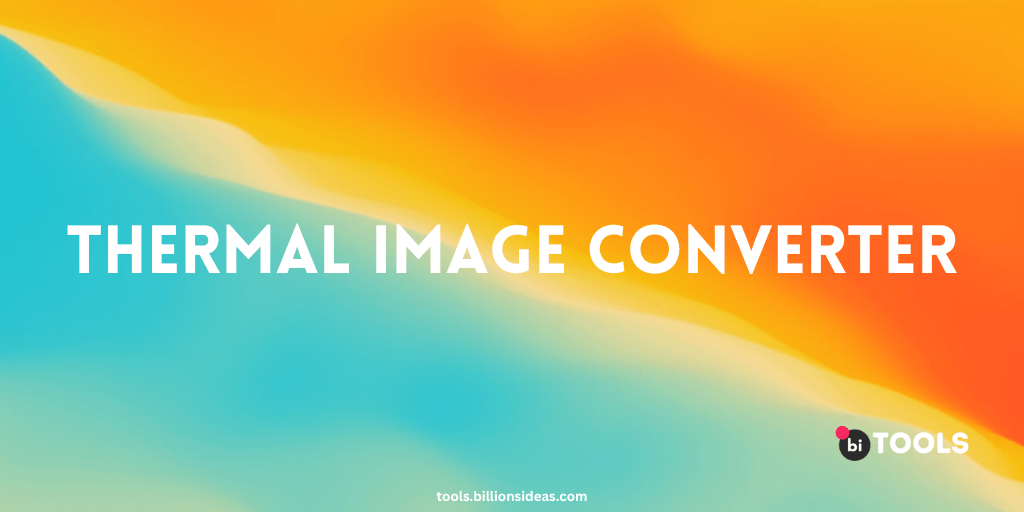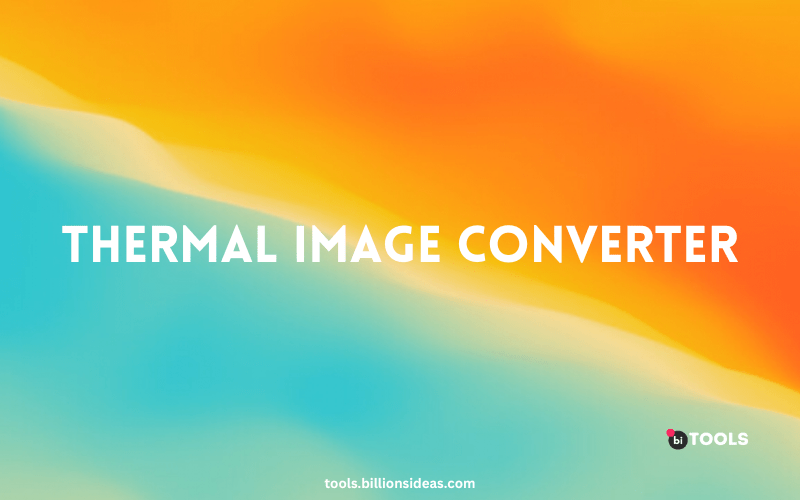Image To Thermal Printer
Tool generate 1-bit data array formatted as a C-array for use with arduino sketches for thermal printers.
Drawing: px (2 bytes), px.
Scale: px (48 bytes).
Mode:
Replace image.h With This:

A thermal image converter is an essential component of thermal imaging technology. It converts thermal energy into visible light that can be viewed on a display screen. The technology behind thermal image converters has come a long way since it was first introduced, and it has now become a reliable tool for various industries.
As technology advances, we have access to more tools to make our work easier and more efficient. One of those tools is the thermal image converter. With a thermal image converter, we can quickly and easily convert thermal images to a format that is easily accessible and understandable. In this article, we'll explore what this image converters are and how they work, and give you tips on how to choose the best one for your needs.
Contents
What is a Thermal Image Converter?
A thermal image converter is a software tool that converts thermal images into a format that can be easily viewed and analyzed. Thermal images are created using a special camera that captures the heat signature of an object or surface. These images are typically in a raw format that is difficult to view and analyze. A thermal image converter takes these raw images and converts them into a more accessible format, such as a JPEG or PNG file.
How to use Thermal Image Converter?
A this image converter works by analyzing the raw data from a thermal camera and applying algorithms to convert that data into a visual image. The algorithms used will depend on the specific converter being used, but most will take into account things like temperature range, color mapping, and contrast settings. Once the data has been processed, the converter will output an image in a more accessible format.
There are two main types of thermal image converters: hardware-based and software-based. Hardware-based thermal image converters are typically built into the thermal imaging device itself. They use specialized hardware to convert the proprietary thermal image format into a standard format, such as JPEG or TIFF.
Software-based thermal image converters, on the other hand, are standalone applications that run on a computer or mobile device. They take the proprietary thermal image format and convert it into a standard format that can be viewed and analyzed using specialized software.
Benefits of Using a Thermal Image Converter
There are several benefits to using a this image converter. First and foremost, it allows you to analyze thermal data more quickly and easily. Instead of spending time manually converting the image, you can use the converter to do it for you automatically.
Online Thermal Image Converter
Additionally, a this image converter can improve the accuracy and reliability of your thermal analysis. Because the converter is designed specifically to convert thermal images, it can ensure that the data is translated into a usable format.
When choosing a thermal image converter, there are several factors to consider. First and foremost, you'll want to ensure that the converter you choose is compatible with your thermal camera. Additionally, you'll want to consider factors such as ease of use, image quality, and the ability to customize settings.
- BI Tools - This software is compatible with a wide range of thermal cameras, making it a versatile choice for those with multiple cameras. BI Tools offers features such as color palettes, temperature span adjustment, and the ability to export images to a variety of formats.
- FLIR Tools - This software is designed specifically for FLIR thermal cameras, making it an excellent choice if you're using one of those cameras. FLIR Tools offers a variety of features, including the ability to adjust temperature span and level, add measurement tools, and even create custom reports.
Conclusion
Thermal image converters are an essential tool for anyone working with thermal imaging. With the ability to quickly and easily convert raw data into a more accessible format, they can save time and make analysis much more efficient. When choosing a thermal image converter, be sure to consider factors such as compatibility, ease of use, and the ability to customize settings.
If you're looking for more information on how to improve your website's SEO and increase traffic, be sure to check out our other articles on the topic. With the right strategies and tools, you can take your website to the next level and outrank your competitors.
FAQs
What is a thermal image converter used for?
A thermal image converter is used to convert proprietary thermal image formats into usable formats that can be analyzed using specialized software.
How does a thermal image converter work?
There are two main types of this image converters: hardware-based and software-based. Hardware-based converters are built into the thermal imaging device, while software-based converters are standalone applications that run on a computer or mobile device.
What should I look for when choosing a thermal image converter?
When choosing a this image converter, consider factors such as compatibility, speed and accuracy, and price.
Can I use a thermal image converter with any thermal imaging device?
No, you will need to choose a converter that is compatible with your specific thermal imaging device.
